A Tour of Masada: Where History, Legend, and Archaeology Meet. / Benjamin Douglass
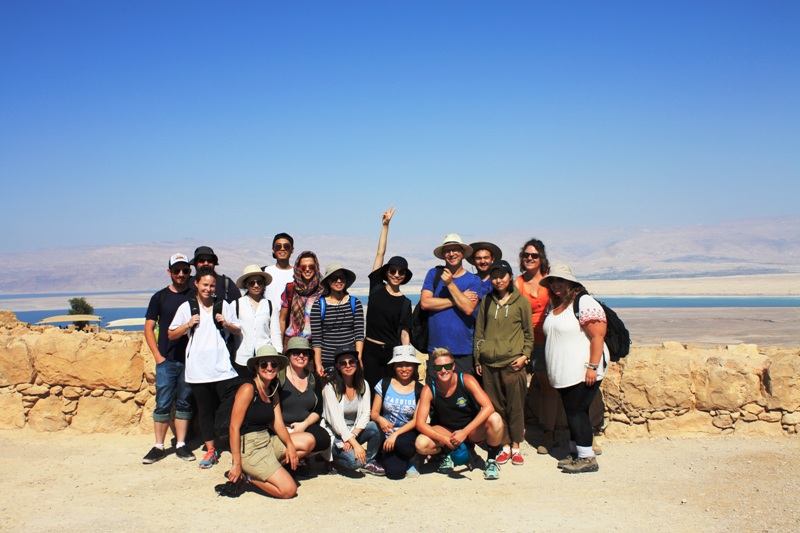
The International MA students at Masada
One of the most impressive tours we’ve had this year was, without doubt, our field trip to Masada, the famous desert stronghold, next to the Dead Sea. We were guided by esteemed Professor Guy Stiebel, who is also the director of excavations there. He gave us a fascinating and in-depth tour of the site, sharing both historical and excavation related stories.
Before ascending the mountain, Prof. Stiebel educated us on the previous excavations at Masada, as well as on the formation and construction of the facilities meant to promote the site. Masada is Israel’s first World Heritage Site recognized by UNESCO, and thus receives special treatment as a historical location. Guy described the discovery of Masada by Yigael Yadin, and explained the importance of the site to the people of the young state of Israel. He discussed the ongoing struggle between archaeology, preservation, and tourism, and showed us some of the finds that were discovered and are on display in the halls of the visitor’s center.
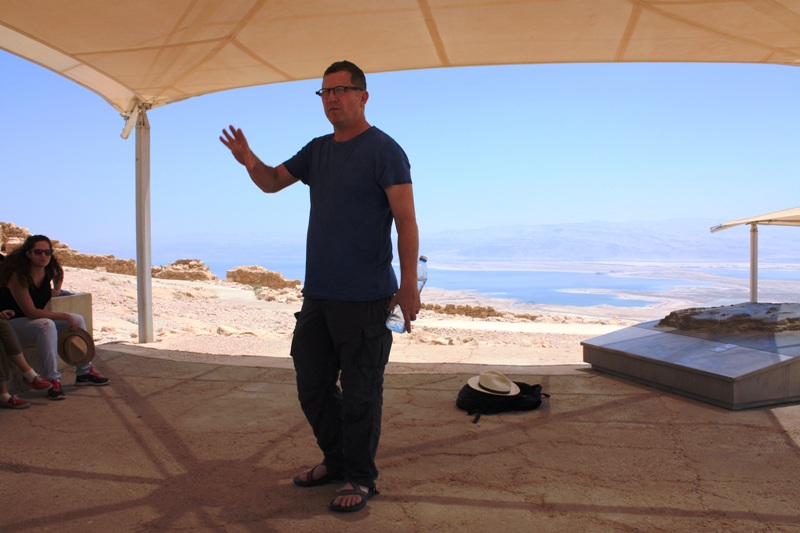
Prof. Stiebel giving the international MA students an overview of Masada
One of the interesting statement Prof. Stiebel shared was that while the finds from the excavations were not exciting (no fabulous luxury items, figurines, or other groundbreaking items were discovered) the context of the site as the location of the last days of the Great Revolt gives an important snapshot into the daily lives of the community of rebels that defied the Romans for over 6 years. Cooking pots were discovered intact and still sitting on the stove as if the people making dinner suddenly were summoned to some critical event outside from which they never returned.
King Herod’s Desert Palace
For many tourists, the exploration of Masada begins before dawn, when they wake up very early to begin a long hike up the side of the mountain. For us, however, saving time was important, so we took the cable car up to the top. On the way up Prof. Stiebel explained the geography and geology of the site, how the mountain was formed, and its strategic importance for King Herod the Great as well as later conquerors.
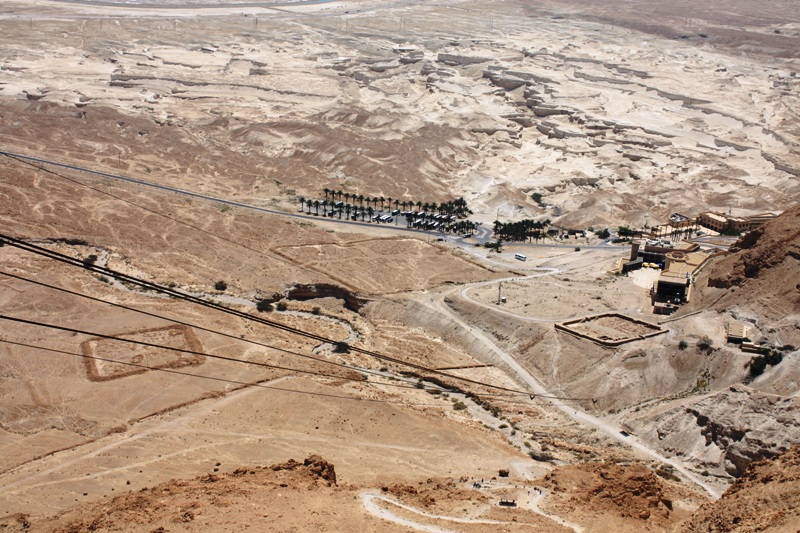
View of Masada Guest House from the cable car going up the mountain
Once we arrived at the summit, Guy explained the structure of his tour. Unlike many tour guides who focus on the story of the Jewish Revolt and the rebels who died there, Prof. Stiebel would talk mainly about King Herod, who constructed the fabulous structures and palaces. Guy explained the layout of Masada, with its many palaces, storerooms, and bathhouses, and took us to see many of them. He took us to King Herod’s own bedchamber and told us how pieces of a bed, similar in structure to the luxurious couches of Rome, were discovered there. At the top patio overlooking the Northern Palace Prof. Stiebel explained how King Herod welcomed his guests to his palace, dined with them, and invited them to his bathhouse. He had the finest and most expensive foods shipped to him in the desert, such as wine and fish sauce from Caesar’s own estates in Spain and apples from Italy. He showed us the elegant frescoes that decorated the walls of Herod’s buildings that were painted by experts from Rome itself. A phrase uttered multiple times by all was “It was good to be the king”. These were just some of the marvels showed to us that King Herod constructed at his luxurious desert palace.
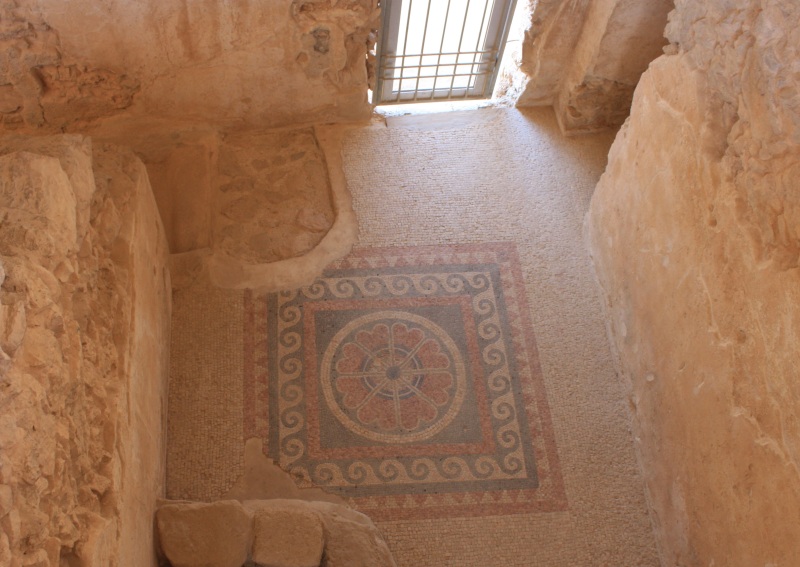
Mosaic of King Herods Personal Bath
The Lives of Rebels
After we basked in the glory of King Herod’s wealth, our tour turned to the daily lives of the community of rebels that lived there during the Great Revolt. Unlike the popular image of zealots grandly defying the Roman Empire, the picture of life atop the mountain is more humbling. Hundreds, if not thousands, of refugees from all walks of life, flocked to the mountain, especially after the destruction of Jerusalem in 70 CE. Many different groups called the summit home, from farmers and bakers, to Essenes and priests. Some of the inhabitants are even known by name, as well as where they lived and worked.
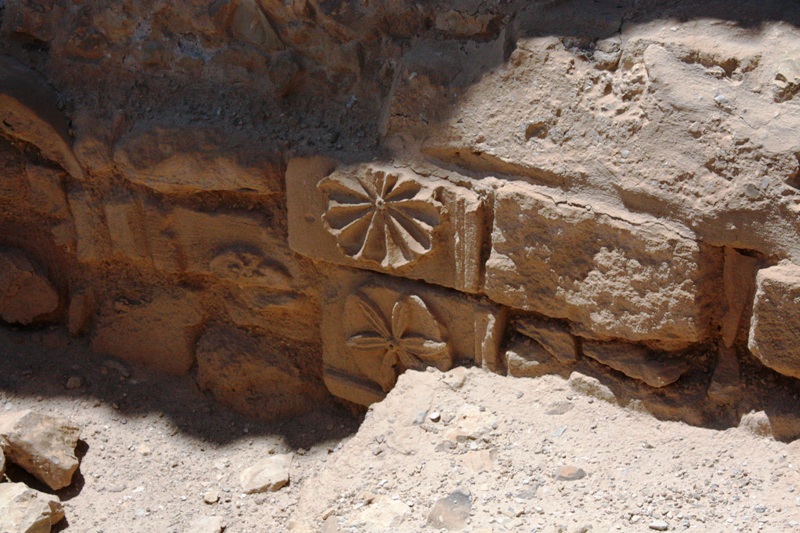
Decorative stones reused by the rebels as building materials
Prof. Stiebel brought us to one building, whose meaning at first troubled excavators until it was discovered that it was a bakery. The large oven, similar in structure to large stone ovens used for baking pizza today, could produce hundreds of loaves of bread in just 2 minutes. The owner of the establishment was named Josephus, or Yehosef in Aramaic. His house was later found next to the wall. Next to the bakery was another building that confused archaeologists. Today it is believed to be a laundry facility. One can imagine a family of refugees bringing their clothes to be washed and going across the street for freshly baked bread!
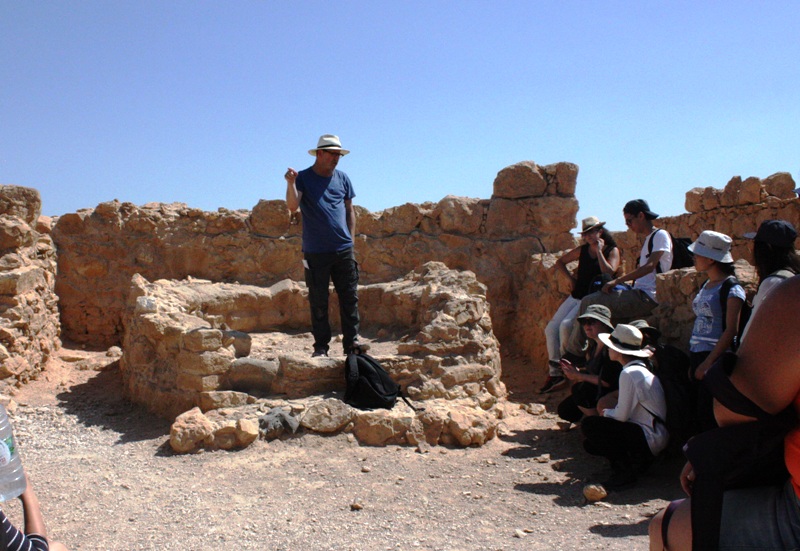
The remains of the large oven found at Masada
Ending with the Siege
We ended our tour with Prof. Stiebel discussing the end of the Revolt and the conquest of Masada by the Romans. We saw the site where the Roman siege ramp reached the top of the mountain, leading to their discovery of the mass suicide. In the visitor’s center at the foot of Masada we entered the dimly-lit museum, which tells the tale of life during the revolt and the siege. The museum ends with a display of the ostraca lots discovered during Yadin’s excavations. These sherds may identify the officers of the rebels who were tasked with implementing the mass suicide. These ostraca are controversial, with not everyone believing they are the famous lots described by Josephus Flavius, but they are still important.
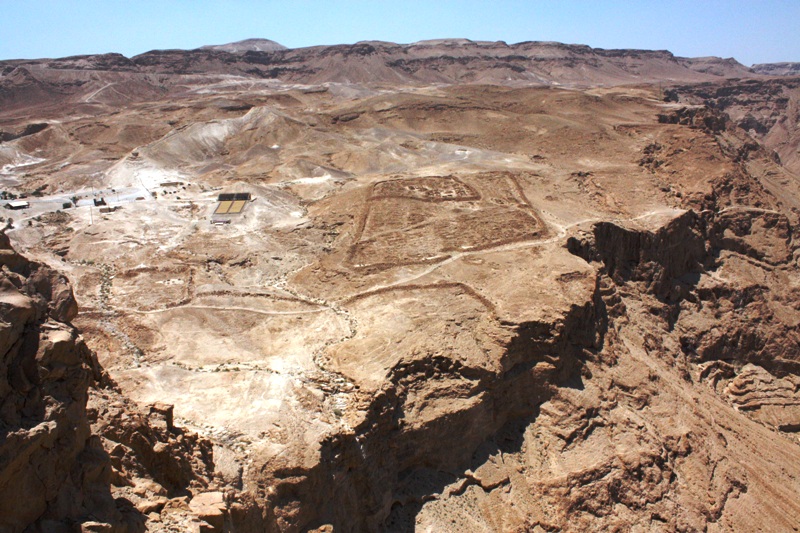
The Camp of the Roman Commander leading the Siege
Our tour of Masada was an exciting day packed full of knowledge and experiences. Our time at the summit was a unique experience not available to most visitors to the mountain. Thank you to Prof. Guy Stiebel for sharing with us his second home and all the hospitality it could offer!

